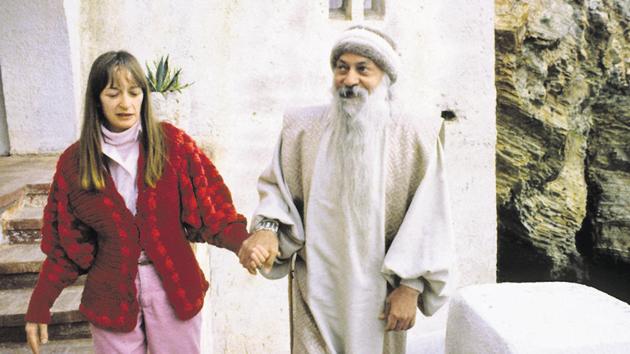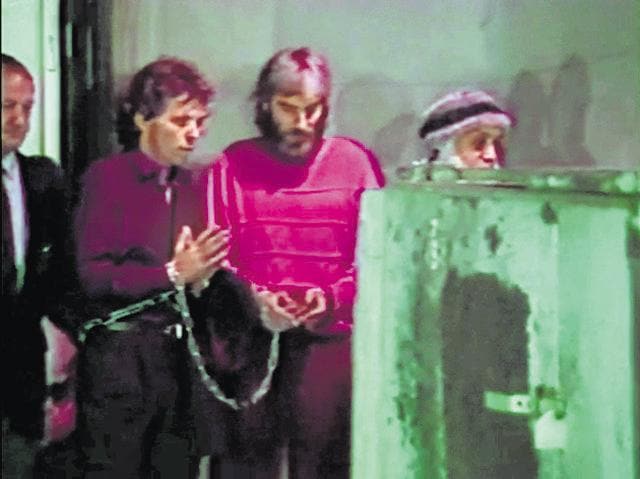Why is Jayesh missing from Osho’s Wild Wild Country?
The recently released Netflix documentary falls short on five important aspects of the Osho saga: the meteoric rise of Jayesh, deaths of Osho and Nirvano in suspicious circumstances and Osho’s ‘forged’ will.
Wild Wild Country, the six-part Netflix documentary on the Osho Rajneesh movement, especially the tumultuous four-and-half years in Oregon, is a brilliant film that helps understand the movement better. It is, however, a missed opportunity because it fails to throw light on the five important aspects of the Osho saga. These are the story of Swami Anand Jayesh, who took command of the movement after it collapsed in Oregon, the deaths of Osho and his soulmate Nirvano in suspicious circumstances, the strange story of Osho’s allegedly forged will and the role that Osho’s personal attorney, Swami Prem Niren (Philip Toelkes), played in presenting the will.


Of these, only the controversy related to Osho’s death and the will find a fleeting mention in the exhaustive and captivating documentary. But the film falls short for want of a fuller treatment. These five elements constitute the third phase of the Osho movement, the last years of Osho and after, and could have constituted the seventh episode of Wild Wild Country. Here are the details:
No mention of Jayesh
The entire documentary of a little over six hours makes no mention of the second most important man in the Osho saga, Swami Anand Jayesh. A Canadian by birth, Michael O’Byrne, known simply as ‘Jayesh’, rose meteorically in the Rajneesh hierarchy after he took sannyas in 1984-85. It is most surprising that neither Osho’s personal attorney Swami Prem Niren (Philip J Toelkes) nor Osho’s disgraced personal secretary Ma Anand Sheela refer to Jayesh even once in their lengthy interviews.
At the opening of part six, exactly at 5:49 minutes and more clearly at 11:49 minutes, there is footage of Osho’s arrest along with Jayesh, Amrito and eight others when their Lear Jet landed at 2 am at the Charlotte-Douglas International Airport at Charlotte, North Carolina on October 28, 1985. Jayesh, who emerged as the controller of finances and mastermind of the Osho movement after its collapse in Oregon, is seen in handcuffs and chains like Osho and Amrito. If Sheela, after Osho, was the most prominent face of Rajneeshpuram, Jayesh, who arrived on the scene in 1984-85 was the exact opposite- always behind the curtains, always hidden away from the glare of the media.
Jayesh was the only person besides Amrito who was present by Osho’s side when he died in Pune on January 19, 1990. When Osho died, Amrito had announced in the Buddha Hall that Osho’s last words to Jayesh were, “I leave you my dream,” and with this, Jayesh became the unchallenged custodian, leader and commander of the Osho movement after the master’s death.
Many of Osho’s followers wonder whether that was a lie told to the believers to seize command and control over the assets of the commune. Since then, it has been Jayesh who has been controlling the affairs as chairman of Osho International Foundation, Zurich, from wherever he is stationed in the world.
No mention of Nirvano
Throughout Wild Wild Country, there is one person who is seen very close to Osho. An attractive white woman with shoulder length hair. Her’s is a silent presence, mostly a step behind Osho. If there was one person who was closest to Osho, it was not Sheela but this woman- the British sanyasin Christine Woolf Smith, then known as Ma Prem Vivek and later as Nirvano. Osho had described this beautiful, charming person as the reincarnation of his first love- Shashi Gudiya- and indeed, Nirvano took care of Osho as a loving wife would. Nirvano, described as “Osho’s shadow” by his followers, was always a part of Osho’s residence- whether in Oregon or Pune, and at night, she locked his room for his safety. Like Osho, Nirvano died in suspicious circumstances at age 41 in the Pune commune, and like Osho, she was cremated hurriedly. She was Jayesh’s girlfriend at the time of her death and her cremation happened in a hush-hush manner, without a word in the press. Her unnatural death, allegedly due to drug overdose, was opened for investigations by the Pune police with 11 entries in the case diary and the file was closed inconclusively a year later.
Her name is carried differently in the official police records and the death certificate issued by the Pune Municipal Corporation as “Alexa Alexander’ and ‘Alisha Alexander’, respectively.
Even today, there is high speculation about the precise cause of Nirvano’s death. The documentary makes no mention of Nirvano even though she was a critical part of Osho’s life and died in suspicious circumstances.
Osho’s ‘forged’ will
At the fag end of Wild Wild Country, at 57:23 minutes, the documentary carries a fleeting image of an India Legal cover story (March 31, 2014) on Osho’s will that surfaced 23 years after his death. When Osho died, the official line by Amrito, the head of the Pune commune, was that Osho did not leave behind a will. However, 23 years later, Osho’s Will dated 15th October, 1989 on a stamp paper surfaced mysteriously during a hearing in the ‘Osho trademark case’ in the Trademark and Designs Registration Office of the European Union. This will named Jayesh as ‘executor’ and Amrito and Niren as ‘witnesses’. Osho’s followers in Italy and India subjected this will to forensic examination at three places- Italy, Delhi and Aurangabad. All the three experts concluded that this will was a forged document and submitted a certified report. On November 18, 2013, Pune resident Swami Premgeet (Yogesh Thakkar) filed a police complaint with the Koregaon Park Police Station followed by an FIR on December 8, 2013 accusing Jayesh, Amrito Niren and three others of conspiring to forge Osho’s will. On August 3, 2016, the Bombay High Court reprimanded Pune Police for poor progress in the Osho will and other cases. This important aspect of the Osho story is completely missing from the documentary.
Niren’s complicity in Osho’s will
The documentary ought to have disclosed that Niren, as Osho’s personal attorney, also known by his official name, Philip J Toelkes, had a key role in preparing Osho’s will, which is the subject of investigations as ‘the forged will case’.
From start to finish, the six long episodes of the documentary are stringed together by the narratives of Sheela and Niren- Osho’s personal attorney,. These are two powerful perspectives – insider stories – of what happened in those days in Oregon. However, they cannot be taken at face value because there are other versions that matter too.
Since Niren was Osho’s personal attorney from 1982 to 1990, and an attorney of Osho International Foundation later, the documentary ought to have questioned Niren – or at least mentioned his role in preparing Osho’s will.
In his Witness Statement before the Trademark and Designs Registration Office of the European Union, Niren said that it was he who had drafted Osho’s will and witnessed Osho signing it in the presence of the signing witnesses, Jayesh and Amrito. The documentary falls short in failing to mention all of this.
Osho death in suspicious circumstances
In the last episode, at 57:11 minutes, Sheela says, “Bhagwan didn’t have a natural death. This doctor who had written death certificate felt it was with overdose” (sic). At 57:18 minutes, the documentary runs a few clippings from Hindustan Times and other papers, with screaming headlines: ‘Doctor claims foul play in Osho death’ and ‘Mystery behind Osho’s death.’ Indeed, Dr. Gokul Gokani, also known by his sannyas name Swami Anand Krishna gave a video interview to this journalist and also signed an incriminating affidavit chronicling the sensational manner in which he was summoned to the Pune commune on January 19, 1990 and asked to certify Osho’s death without giving him a chance to see Osho in his dying moments.






